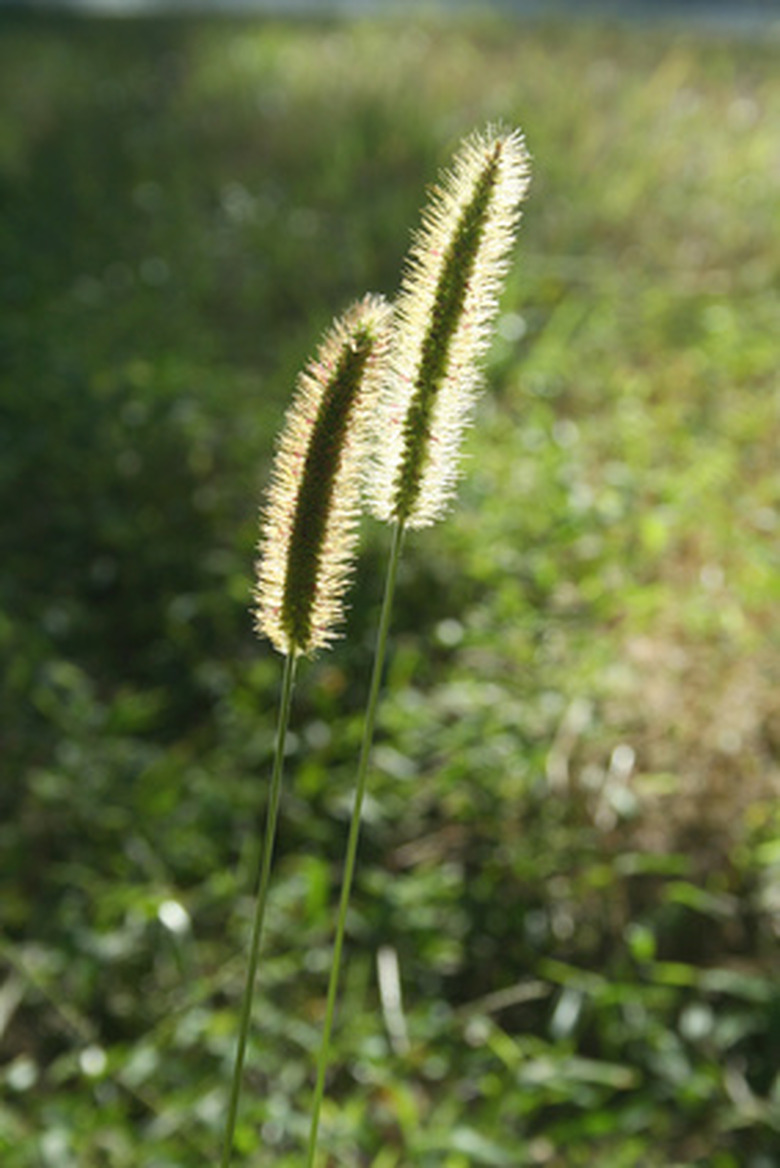How To Identify Lawn Weeds In Arizona
Even in the desert regions of the American Southwest, lawn weeds can still take over a landscape. Arizona has many native lawn weeds that must be identified before pulling them out or using a herbicide. One of the best ways to identify Arizona lawn weeds is to get a grass-weed field guidebook with pictures. This will ensure that you identify them correctly so you know exactly how to deal with them.
Step 1
Look for colored weeds, such as the purple-green bottle-brush barnyard grass. These grow up to 2 inches tall and need to be removed at an early stage.
Step 2
Identify one of the more common Arizona lawn weeds, bluegrass. This perennial thrives on landscapes that are well hydrated with either a good irrigation system or a place where water gathers from rain. From March to September, this weed pops up with 4-inch-long leaves and green bushy stems.
- Even in the desert regions of the American Southwest, lawn weeds can still take over a landscape.
- Arizona has many native lawn weeds that must be identified before pulling them out or using a herbicide.
Step 3
Look for spreading weed clumps from June to November to identify common green foxtail or bristle grass. Usually these lawn weeds have leaves that are at least half a foot long and broad. Sometimes bristle grass has purplish bristles that pop up.
Step 4
Look from April to November for some of the largest Arizona lawn weeds, Johnson grass. This weed grows up to 7 feet tall, primarily on unmaintained lawns and in ditches or washes.
Step 5
Check rock garden areas for wild oat grass. The tall, thin, textured stalks grow 3 to 9 inches tall and have small flowering bristles on top. Since they don't need a lot of water to live, they can grow in areas such as rock scapes or dirt lawns.
- Look for spreading weed clumps from June to November to identify common green foxtail or bristle grass.
- Look from April to November for some of the largest Arizona lawn weeds, Johnson grass.
Step 6
Identify rabbit-foot lawn weeds from March to October. This yellow-green weed has spiked tan or yellow flowers and thick layers. Rabbit foot flourishes in washes and rocky areas.
Reseed A Lawn With Weeds
If you are faced with a neglected lawn that's partially dead and is being taken over by weeds, you may be able to renovate it. Follow up by applying a selective herbicide product that kills common broadleaf lawn weeds while not harming grass. Normally, all weeds will be dead within two weeks. Most deteriorated lawns have a built-up layer of dead and partially rotted grass stems, roots and rhizomes just below the green grass leaves. For small lawns, you can remove thatch with a garden rake. For large areas, go over the lawn with a power dethatcher, also known as a vertical mower or power rake. The soil nutrients most important to healthy grass plants are nitrogen, potassium and phosphorous. Supply these nutrients by applying a commercial fertilizer formulated for starting lawns and lightly rake it into the soil before you reseed.
- Identify rabbit-foot lawn weeds from March to October.
- Most deteriorated lawns have a built-up layer of dead and partially rotted grass stems, roots and rhizomes just below the green grass leaves.
